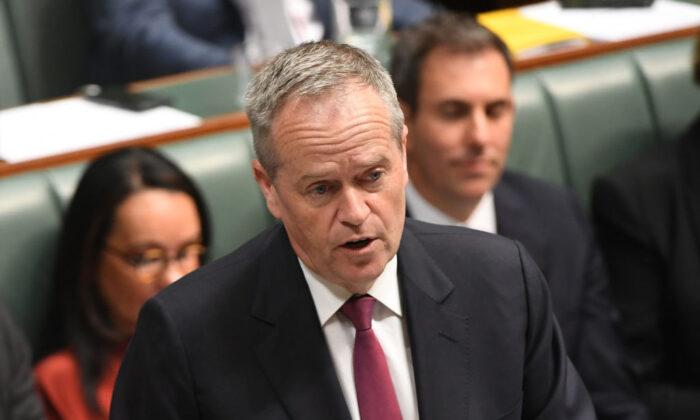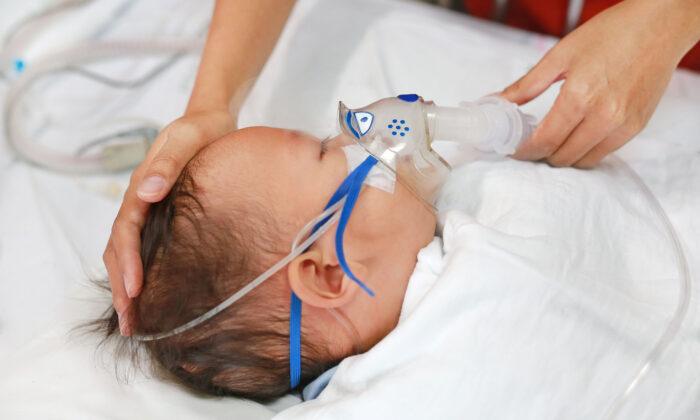The Minister for the National Disability Insurance Scheme (NDIS), Bill Shorten, has rejected calls to allow people who are diagnosed with attention deficit hyperactivity disorder (ADHD) to gain automatic eligibility into the support program.
Instead, the minister said there are other avenues that could be explored by people who have an ADHD diagnosis.
“I think there’s a really good opportunity to support kids with developmental delay through universal screening, through having a look at what are the foundations that other departments and the states do, to provide access to kids with developmental delay to support—other than the NDIS,” Mr. Shorten told ABC radio on July 7.
“I’m not saying that people don’t have ADHD, absolutely not, and I think we’re learning more about it.
“But I don’t think ADHD should automatically give you a ticket into the NDIS.”

However, the RANZCP has also recommended that eligibility for the NDIS be decided based on the functional needs of the person with ADHD and not solely on their diagnosis.
Currently, several thousand children with neurodevelopment disorders, such as ADHD and autism, have joined the NDIS, just as the federal Labor government aims to quell the ballooning cost of the support program.
NDIS Only Support System for Children with Neurodevelopmental Disorders
In some cases, the NDIS has been the only support system available to affected families as school and health system support systems dwindle, according to the architect of the NDIS, Professor Bruce Bonyhady, reported The Sydney Morning Herald.Meanwhile, a submission by the Australian Clinical Psychology Association said that private sector treatments for ADHD have been “out of reach for lower-income groups, where there is likely to be a higher prevalence of ADHD.”
Mr. Shorten said while the NDIS is about individuals, it’s also about what support they need to live a fulfilling life.
“There are a small number of people whose primary diagnosis is ADHD because it clearly affects them a great deal,” Mr. Shorten said.
“There’s more kids entering the scheme than was initially conceived of when the scheme was established. That could be partly because there was unmet demand; in other words, the system before the NDIS wasn’t picking up people who needed help.”
According to a Deloitte report, approximately 281,200 children and adolescents (aged 0-19) and 533,300 adults (aged 20+) in Australia are diagnosed with ADHD.
Overall Rate of Disability Higher Now than 10 Years Ago
Mr. Bonyhady said the massive cost to the NDIS, which went from $8 billion per year 10 years ago to more than $30 billion today, comes down to two factors.First, the overall rate of disability is higher, and second, the absence of supports outside the scheme means that it is the only option.
Additionally, an overdiagnosis of autism in children has resulted in children being sent to clinics for treatment rather than receiving support at home and school.
“The increasing reliance on therapy delivered in clinical settings has got in the way of children living ordinary and inclusive childhoods,” the June NDIS report said.
“These failings—together with the lack of supports for all children with disabilities in mainstream settings—[are] undermining the sustainability of the NDIS.”
Additionally, when children did not get adequate support, their condition deteriorated, and their needs increased, resulting in a higher cost as they entered the NDIS much later.
Mr. Bonyhady said that for the half a million Australians who have accessed the NDIS, there was a lack of clarity over the criteria of “reasonable and necessary support.”
“People with disability feel the need to produce volumes and volumes of evidence to support their plan reviews ... The whole thing is deeply stressful,” Mr. Bonyhady said.
“People are forced to present their worst side in order to enter the scheme and then receive a package of support to support their needs.”
In May, the Albanese government revealed its plan to save more than $74 billion over the next decade by reducing the annual funding target of the NDIS. To achieve this, the Albanese government capped the annual funding target at eight percent by July 2026.
“Future costs have to be predictable. In the absence of [that], there’s a real risk of loss of public confidence in the scheme. And the scheme needs to be there for people with disability today and in the future,” Mr. Bonyhady said.





